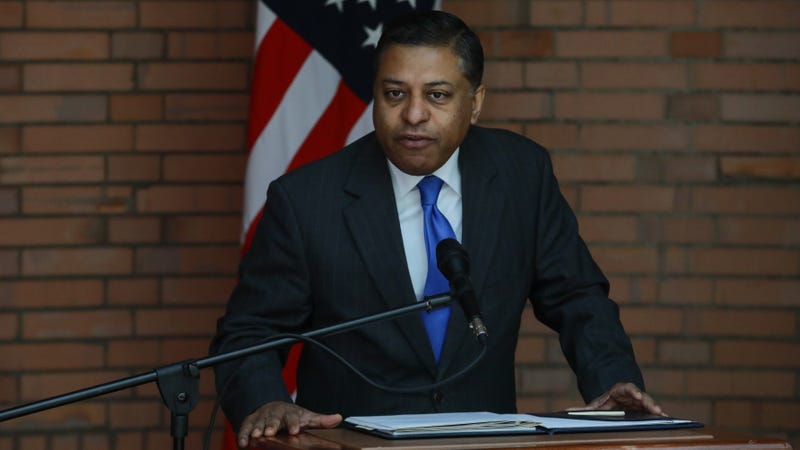
PHILADELPHIA (KYW Newsradio) — Philadelphia’s complicated and prolific illegal drug market has attracted White House attention. Dr. Rahul Gupta, director of the Office of National Drug Control Policy, is in town this week to study the city’s response to the growing threat from a deadly combination of the artificial opioid fentanyl and the horse tranquilizer xylazine in a street drug known as “tranq.”
Philadelphia has the dubious distinction of being a leader in the development of new street drugs. Gupta says he will spend the next few days visiting Kensington and speaking with local and state officials. What he learns in the next few days in Philadelphia will help guide the national response.
“What happens here in Philadelphia to affect the xylazine and fentanyl combination affects the rest of the country,” Gupta said. “You’re leading the way in developing management protocols, managing people and their complications and saving lives.”
Xylazine has been a particularly thorny development. It’s a tranquilizer, not an opioid, so it doesn’t respond either to traditional rehab tools, such as methadone, or the overdose-reversing naloxone.
Philadelphia Health Commissioner Dr. Cheryl Bettigole says the city has had to innovate solutions through trial and error since it’s been in the vanguard of illegal drug contamination.
“Doctors, nurse practitioners try something, and if that something works, they share it and set up studies, because we need to know for sure if it works,” Bettigole said.
Bettigole says it’s not clear why Philadelphia is the epicenter of these new and deadly drug combinations but suspects it’s connected to the city’s high poverty rate.
Just five years ago, Philadelphia was called the heroin capital of the country. Now, fentanyl has mostly replaced heroin, xylazine is showing up in about 90% of street opioids and, last fall, the city began to see yet a new threat: nitazines.
“Nitazines are synthetic opioids that are 40 times more potent than fentanyl,” Bettigole said.
She says the city has a lot to share with Gupta about what they have learned in the fight against overdose deaths:
— The diversion of substance use prevention and harm reduction is working with colleagues, local health care systems, and community-based organizations to develop best practices for the treatment of xylazine withdrawal symptoms and for the necrotic wounds caused by intravenous use of xylazine.
— The bereavement care team is working to assist families who have lost loved ones to overdose. Bettigole says it is very common for someone to experience a drug overdose after a family member dies from an overdose, so the department is exploring whether there’s a connection.
— The Department of Public Health is conducting focus groups to better understand the rise of stimulant-associated overdose deaths — whether they’re accidental or intentional — to better target interventions.
— The Department is distributing naloxone and providing training in how to use it and reaching out to health care providers to prescribe naloxone for all patients.
“We have not yet succeeded in beating back the overdose epidemic, but we are determined to use every tool available to help us save lives,” Bettigole said.



